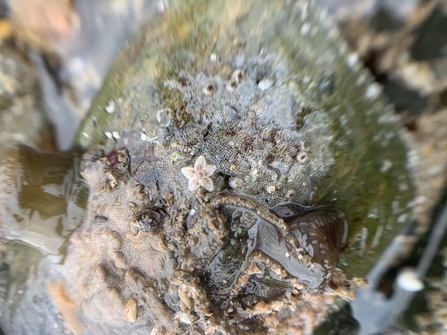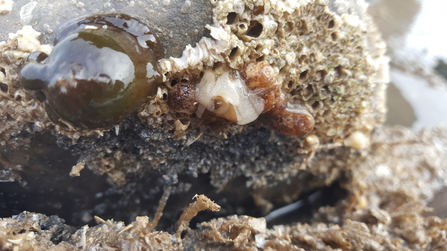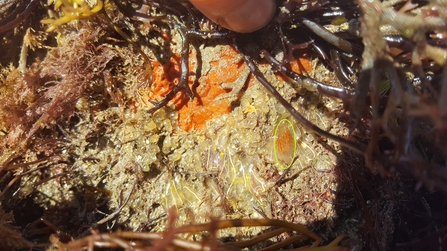Two sites lie within the Liverpool bay SPA (Special Protected Area) for breeding and overwintering waterbirds. We also headed to Rhoscolyn, whose intertidal area comes under the Glannau Rhoscolyn SSSI.
We also had the greatest number of volunteers out, so far and since Slipper limpets have been recently found in the North Wales area, we decided to focus our timed species searches to looking closely for any signs of them.
Number of volunteers overall – 11
Number of quadrats sampled – 12 mid-shore, 10x low-shore
Time spent in timed species searches – 16x10 minutes.
Seasonal findings – Baby stars!! They were spotted by two groups of surveyors, clearly honing in on everything, because these were miniscule. A close-up shows they’re looking like baby common starfish.
Strangely, there was a recent blog by the creator of Cornish Rockpool Heather Buttivant, who had found cushion star babies after having regularly found eggs laid on the shore. The common star/seren fôr (Asterias rubens), doesn’t lay eggs like this, instead they are what’s called broadcast spawners (eggs and sperm are released into the water in Spring and fertilisation takes place in the sea). The young go through several bizarre-looking stages floating around in the plankton, before settling in their mini adult-type form, sitting waiting to be found by Paige, Oliver, Eleanor and Mandy.







